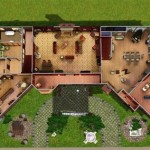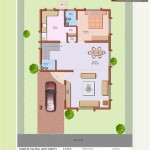Essential Aspects of Upstairs House Plans in Sri Lanka
Upstairs house plans offer numerous advantages for homeowners in Sri Lanka, including increased living space, enhanced privacy, and improved ventilation. However, careful consideration should be given to various factors when designing and constructing an upstairs house to ensure optimal functionality and longevity.
Site Selection and Soil Conditions
The site selection is crucial for an upstairs house. The topography, soil conditions, and availability of utilities should be thoroughly assessed. Sloping sites may require additional excavation and foundation work, while unstable soil conditions may warrant specialized reinforcement measures.
Structural Design and Materials
The structural design of the upstairs house should be robust and able to withstand the weight of the additional storey. This includes the selection of appropriate materials for the foundation, columns, beams, and roof. Concrete, steel, and timber are commonly used in Sri Lanka for upstairs house constructions.
Staircase Design
The staircase is a key feature of an upstairs house, providing access to the upper level. It should be designed for both safety and convenience. Considerations include the width, slope, number of steps, handrail design, and lighting. A well-designed staircase enhances the overall aesthetics of the house.
Roof Design and Ventilation
The roof design plays a vital role in protecting the house from the elements. In Sri Lanka, sloping roofs are common to shed rainwater effectively. Adequate ventilation is also crucial, especially in the upper level, to prevent moisture accumulation and ensure a comfortable living space.
Space Planning and Room Configuration
When designing the upstairs house, careful consideration should be given to space planning and room configuration. The number and size of rooms, as well as their functionality and relationship to each other, should be carefully planned. This includes the placement of bedrooms, bathrooms, living areas, and storage spaces.
Natural Lighting and Cross-Ventilation
Natural lighting and cross-ventilation are essential for a comfortable and healthy living environment. The orientation of the house, window placement, and skylights should be designed to maximize natural light and allow air circulation. This reduces the need for artificial lighting and improves indoor air quality.
Aesthetic Considerations
In addition to functionality, aesthetic considerations should be incorporated into the upstairs house design. The exterior facade, roofline, and landscaping should complement the surroundings and enhance the overall visual appeal of the property. This includes the choice of colors, textures, and architectural details.
Conclusion
Upstairs house plans offer unique advantages for homeowners in Sri Lanka, providing additional living space, privacy, and ventilation. By carefully considering the site conditions, structural design, staircase design, roof design, space planning, natural lighting, cross-ventilation, and aesthetic considerations, homeowners can create beautiful and functional upstairs houses that meet their needs and enrich their living experience.

Front House Roof Design Modern Plans New

Box Type House Plans In Sri Lanka Elevations Kedella

Find Properties Building Constructions Designs Support Services On Lanka Vertical Height Property Ads

House Plans In Sri Lanka Two Story 3d Home Kedella

Find Properties Building Constructions Designs Support Services On Lanka Vertical Height Property Ads

House Plans And Design Architectural Designs Of Houses In Sri Lanka Ff5 Pictures Village Kerala

Find Properties Building Constructions Designs Support Services On Lanka Vertical Height Property Ads

4 Bedroom House Plans In Sri Lanka 3d Home Kedella

Kedella Homes Design Build Your Dream Home With Us

House Plan Sri Lanka Nara Engineering Planing 3d Designs








